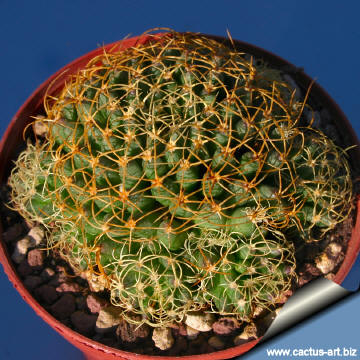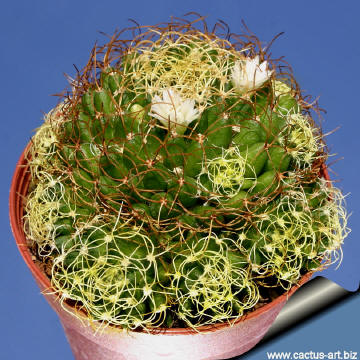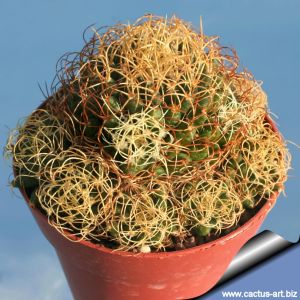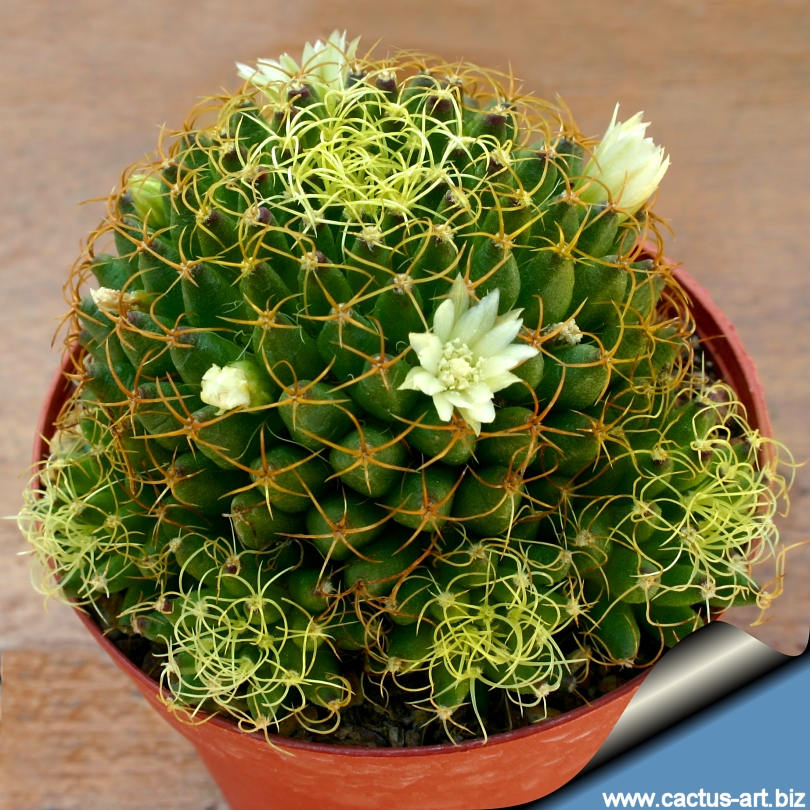-
x
Descrizione
Gli anglosassoni la chiamano "Bird's nest Mammillaria" per la sua forma simile ad un nido di uccello. E' una pianta molto particolare con fitte spine flessibili e contorte che forma rapidamente ampi cespi. Una vera bellezza!A.k.a. Family: Cactaceae (Cactus Family) Scientific name: Mammillaria camptotricha Origin: Garden origin (Nursery produced cultivar) Common English Names include: Bird's Nest Cactus Etymology: Named to honour Anne Therese Marnier-Lapostelle, the first wife of Julien Marnier-Lapostolle - owner of famous plants collection "Jardin Botanique des Cedres" in Cap Ferrat (France). President of "Association Francaise des Amateurs de Cactees" Conservation status: Listed in CITES appendix 2.
| |
| Description: M. decipiens (including M. camptotricha) is a small plant that make a large, flattish clump of stems clustering from the lower part.
M. camptotricha has two nice cultivars:
| |
 |  |
| Cultivation: This plant is easy to cultivate in a well drained and mineral substratum and avoid the use of peat or other humus sources in the potting mixture. Pot plants are quite wet-sensitively, especially in light of its small root system (Do not over-water). Water regularly during the growing season, let soil dry in between to prevent root rot, keep dry in winter. It need medium sun exposure. Usually it is recommended to overwinter this plant in a bright and warm greenhouse with at least 8-10° C , but it proved to be quite frost resistant (if kept dry it hardy as low as -7° C) A resting period in winter and strong light are necessary so that it can flower properly. Plants will offset readily, and dense clumps can be produced in a very few years. Feed with a high potassium fertilizer in summer. | |


